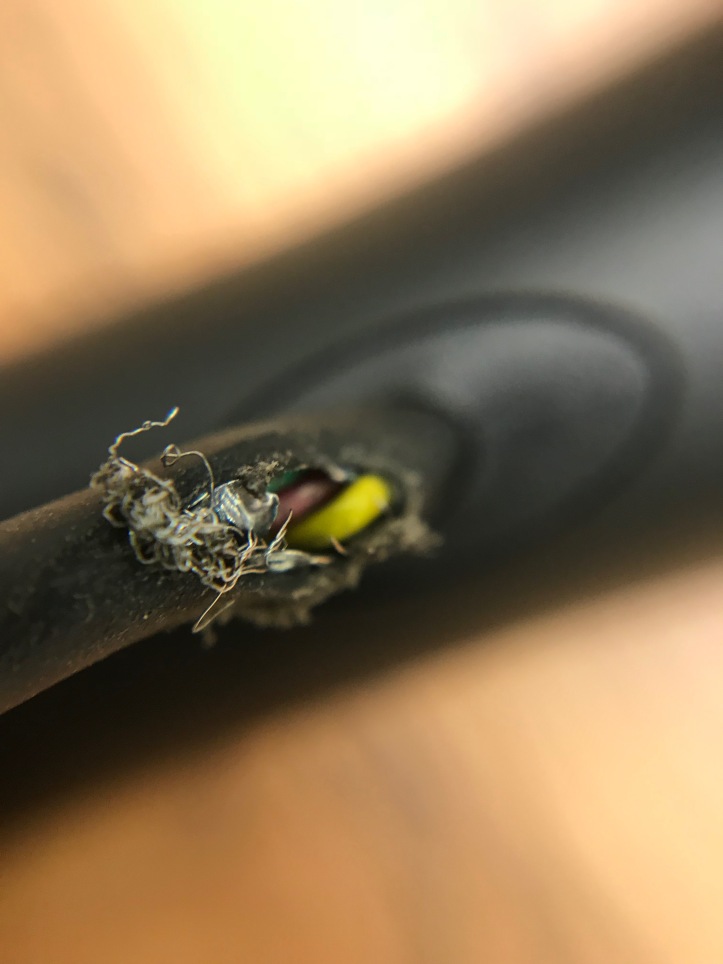Nothing will shake out the bugs and defects in anything quite like exposure to the energy and intensity of elementary students. I’ve seen nicely manufactured kid-friendly robots happily fail to drive forward after only two-weeks of exposure to elementary students. And we’re not talking about driving them off tables or running them into walls or any other forms of robot/technology abuse. Just the normal-but-intense usage by seven- to 12-year-olds during 40-hour a week summer camp sessions will show the weakness or flaws of any technology (or plan).

Broken Stylus Wire
Currently my latest frustration is realizing that computer/technology equipment that was designed to work with either the military or university students doesn’t stand a chance when faced with a room full of 5-year-olds. Within less than a week my students had exposed a fatal flaw that would cripple every expensive 3D-augmented-reality-Windows PC. The styluses, necessary to run the 3D software, were vulnerable to eager 5-year-olds playing tug-a-way with said styluses. The wires, the wires were not designed to withstand 5-years tugging at them. So, if the wires attaching the styluses break, no 3D-augmented-reality functions and we’re left with very expensive PCs with no 3D interface. And no matter how much I might pre-test the machines before the school day begins, several students will complain when things are most hectic that “my computer isn’t working” and I have to troubleshoot on the spot, running through the list of possible problems, one that might be the stylus-wire has died a tog-of-war death. It can get to the point where I question the wisdom at creating curriculum that is dependent on the styluses to perform without failure.
Ever the one to work on the bleeding edge, I completely understand why teachers choose against using technology in their instruction. Sometimes it’s just not worth it to go the extra mile when three out of eleven computers don’t perform per plan. This is why NASA does everything with at least triple redundancy, anything goes wrong and people die. Mine isn’t nearly that dramatic, but when I’m really pushing the students to engage with learning material that isn’t easy, I do not need the technology to add another layer of difficulty by being unreliable or faulty. The 3D-AR PC vendor is great and more than ready to replace any stylus in the midst of death-throes. It’s just exhausting to work around these design flaws that always present themselves at the worst possible moments. That’s also probably why military expenditures are so costly, no one wants things breaking down at the worse possible moment (though I’m sure many a soldier quickly learned to work around faulty equipment when under fire!).
So, you want to see if there’s anything wrong with your design or technology? Just one day with my students will expose the weaknesses and faulty-thinking. We should really offer this as a service. I have my doubts whether many “innovative” tech companies have the balls to accept my challenge. It could be interesting (and more than a little frustrating for all parties).











